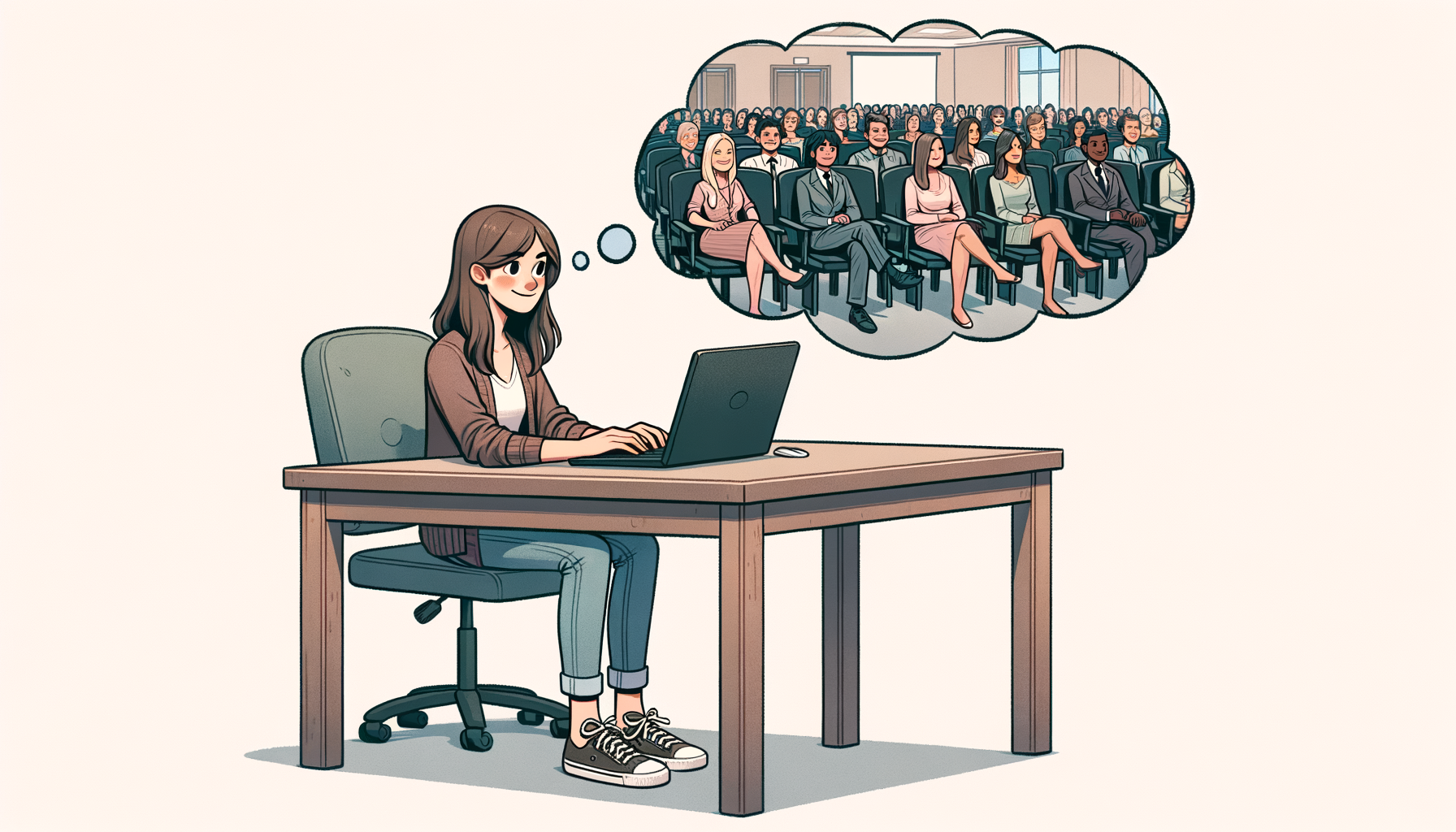Picking conferences to attend
Posted 6/17/2025

The conference invitation email sits in your inbox, promising 'cutting-edge research' and 'networking opportunities' in the middle of a beautiful city. Your finger hovers over the register button. Should you click it?
Before you commit, do some homework about your objectives and options. Consider the following criteria to identify your priorities and then screen individual opportunities. The right conference depends on three factors: your goals for attending, your resources, and the meeting's structure.
Goals and decisions
You can’t make choices without knowing your goals. Meetings are most valuable for getting exposed to new ideas, disseminating your own work, and meeting colleagues. If you're early in your PhD, prioritize learning and networking over sharing your work. If you're on the job market, dissemination and networking are critical.
Conference alternatives
Many academics treat conference attendance as a moral obligation. It's not. Your true need is to create and disseminate knowledge, and conferences are simply one means to that end. If you’re just getting started, reading papers for a few days may teach you more than a bunch of short presentations. With some creativity, you can often create better ways to meet people or gather feedback.
Can you get invited to present to a professional committee working on problems related to your research? Can you volunteer to give a seminar at a nearby university or national laboratory or company? With these formats, you are the center of attention for the day rather than one of dozens of speakers, so you will get massively more attention. You will also have more time for the presentation and discussion, allowing for more substantive engagement. And rather than paying to participate, the host may reimburse your travel expenses or take you for a meal as a thank-you. Many hosts use these talks for soft recruiting, so you might also obtain a job lead. Especially as a junior faculty member, my most productive talks were seminars at other universities, because my hosts focused on getting to know me and my work. These opportunities require more work to find, but they pay big dividends.
Traditional meetings probably still serve a role in your portfolio of activities. So let’s parse several dimensions of their characteristics to find those best aligned with your goals.
Resource constraints
Conferences require substantial time and money. It takes time to prepare and rehearse your presentation, plan your travel, and attend the meeting. Consider also your budget for travel, whether from your own fellowship or what your advisor is willing to sponsor. And consider how it might be best spent over the course of the year or your PhD.
Meetings vary significantly in terms of the time and funding they require. Local meetings that don’t require lodging or much travel can save a lot of both, and are thus quite appealing. At the other extreme, a large conference in an expensive foreign city will require at least two weeks of effort and cost more than $2,000. Check for discounted student registration fees, and inquire about this if you don’t see anything posted publicly. Ask also about whether they are looking for helpers in exchange for a reduced registration fee—this both offsets your costs and gives you a mechanism to meet new people. But even with sufficient time and money, not all conferences are created equal.
Meeting formats
A key indicator of meeting quality is the sponsor and participants. Professional societies host high-quality meetings in many fields. Consider also where leaders in your field attend. Ask your advisors and peers which conferences have the highest quality work and are most closely related to your research.
Another format consideration is the location and venue. Meetings in big cities or near tourist attractions are fun, but others will also play hooky to sightsee, leaving the meeting space feeling like a ghost town. At the other extreme, meetings with a single dedicated venue, in a quieter locale, or that include breakfasts and dinners, will provide substantially more opportunities for you to engage with other attendees.
Meeting sizes
Size matters as much as format in determining whether a conference serves your goals.
Large conferences (1000-10,000 people) will undoubtedly have relevant attendees, and often include useful associated committee meetings or training opportunities. They provide opportunities to meet people or learn ideas from tangential fields not represented at your small focused meetings. On the other hand, it is hard to find or approach new people. These conferences often have dozens of parallel presentations happening at once (many of which are lower quality), making it harder for you to draw attention to your talk or find gems to listen to. The meetings last five or six days due to the numerous presentations, resulting in additional time and expense for participation. As an introvert, I find big events the most tiring to navigate.
I used to regularly attend the 25,000-person American Geophysical Union Annual Meeting. But even navigating the huge physical space is overwhelming, and I would sometimes finish the day having had only a couple of meaningful conversations. If I go now, I focus on a few specific topical sessions and mentally ignore the other sessions and people. Nobody notices if I am there or not, so I feel no obligation to attend and no fear of missing out.
Small workshops (30-100 people) usually focus on a narrow topic and to have few, if any, parallel presentations. It’s thus relatively easy to meet new people and showcase your work. They are thus incredibly productive if you find one with the right topic. However, the most relevant meeting may be far away, and sometimes workshops are invitation-only or have limited advertising. You also need to work harder to ensure that there will be interesting ideas and people, as small events provide less information beforehand.
A two-day invitation-only workshop in Capri, Italy, had excellent participants and topical fit. I timed my travel to arrive right before the meeting started. But the 24-hour multi-leg trip from California left me more exhausted than usual. I fell asleep in the meeting room the first day, and was too tired to stay up for the lovely workshop dinner. I learned that even perfect meetings aren’t worth it if you’re too tired to engage.
Medium-sized meetings fit somewhere between the above two. With a bit more breadth than small workshops, it’s easier to find a topical fit. Relative to big conferences, your work will get greater attention and it is easier to meet people and have follow-up conversations. These might take a bit more work to identify than the huge meetings that “everybody” goes to, but this is my favorite size if I find a good fit.
The ~800-person national conference of a relevant professional society (EERI) is one of my favorite meetings. It only occurs every four years, so it’s practical to go every time. It’s usually in accessible but not distractingly nice venues, so people stick around the meeting. And the size is such that I can catch up with all my close friends and colleagues, as well as meet a number of new rising leaders. I wouldn’t want all my meetings to be 800 people, but this one is an important foundation for my portfolio of events.
-
Considering these factors, create a conference strategy such as “I would like to give a seminar to a local group this fall, and attend a medium-sized meeting next summer that is not too far away.” If your advisor agrees, ask her for help identifying matching opportunities. And use the statement yourself to screen incoming opportunities for matches, rather than being mentally buffeted by each announcement that arrives in your inbox.

Register
Use the following link to register to receive very occasional updates about new offerings on this page. I will not share your information with anyone.